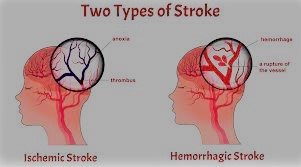What is a stroke?
Let’s get started with understanding Strokes, its Prevention, and Recovery. A stroke is a severe medical condition that can affect anyone. It happens when a blood clot or a ruptured blood vessel cuts off the flow of blood to a specific area of the brain, resulting in brain damage and even fatality.
Stroke occurs when brain cells suddenly die due to a lack or deficiency of oxygen. There are two types of strokes: Ischemic and Hemorrhagic. Ischemic stroke is caused by a blocked artery that deprives the brain of oxygen. Hemorrhagic stroke is caused by bleeding in the brain from a tear in an artery’s wall. The severity of a stroke is determined by the affected part of the brain and the extent of the damage. Oxygen is essential for brain cell function, and a shortage can lead to serious complications and death. As a result, stroke is a critical medical emergency. If you or someone you know has experienced a stroke, Learn more about stroke recovery and support. As we have discussed Strokes, let’s further discuss its types, Prevention & Recovery.
Types of strokes:
There are two primary kinds of stroke:
Ischemic stroke
An ischemic stroke happens when a blood clot obstructs a blood vessel in the brain.
Hemorrhagic stroke
While a hemorrhagic stroke occurs when a blood vessel in the brain ruptures and leads to bleeding.
Causes and Risk Factors:
Numerous factors can increase the likelihood of experiencing a stroke. Some of the most common risk factors include high blood pressure, smoking, diabetes, high levels of cholesterol, and heart disease.
Additionally, factors such as age, gender, family history, and race can also play a role in increasing the risk of experiencing a stroke. Furthermore, lifestyle choices, such as an unhealthy diet, lack of exercise, and excessive alcohol consumption, can also contribute to the risk of stroke.
Signs and Symptoms:
If you suddenly feel numbness or weakness in one side of your face, arm, or leg, and also experience confusion, difficulty speaking or understanding speech, trouble with vision, walking, dizziness, or severe headache, seek medical attention right away. These symptoms might signify a stroke, and getting treatment promptly can have an impact on your recovery.
Assessment and therapy:
If a stroke is suspected, medical professionals will conduct a physical examination and carry out various tests, such as blood tests, imaging scans, and other diagnostic procedures. The treatment for a stroke will vary depending on the type and severity and may involve
medication, surgery, and rehabilitation therapy. Early intervention and treatment can often improve outcomes and reduce the risk of long-term complications.
Recovery and Rehabilitation:
Following a stroke, it is crucial to focus on recovery and rehabilitation as an integral part of the healing process. Depending on the severity of the stroke, rehabilitation could include physical therapy, occupational therapy, speech therapy, and other types of therapy to enhance strength, mobility, and function. Collaborating closely with your healthcare team is essential to develop a customized rehabilitation plan that caters to your specific needs and goals. With determination and persistence, many individuals make remarkable progress in their recovery from stroke.
Prevention and Lifestyle Changes:
Lowering the chances of having a stroke involves adopting a healthy lifestyle and treating any medical conditions that heighten your risk. To reduce the risk of stroke, it is important to eat a balanced diet, exercise regularly, quit smoking, manage stress, and maintain healthy blood pressure, cholesterol, and blood sugar levels. In addition, it is crucial to identify and promptly seek medical attention if you experience any indications or symptoms of a stroke.
Conclusion:
It’s important to be aware of the signs and symptoms of a stroke, as well as how to prevent and manage this condition. If you or someone you know shows any signs of a stroke, seeking medical attention immediately is crucial. With timely intervention and treatment, many people can recover from a stroke and improve their quality of life.
